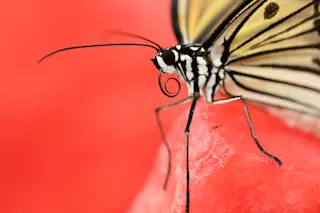Batwa rainforest hunter-gatherer in Bwindi Impenetrable Forest National Park, Uganda. Image courtesy of George Perry There are roughly half a million known pygmy people living in various tribes around the world, clustered mainly near the tropics in African and Southeast Asia. Anthropologists have long attributed the small body sizes of pygmy peoples to nutritional deficits resulting from harsh living conditions of the rainforest. But in a new study, researchers report that the human pygmy trait has a genetic basis, and has in fact evolved several times in different populations. "We have found the strongest evidence yet that the pygmy phenotype is controlled by genetics," Luis Barreiro, the study’s author, told
Researchers focused on the Batwa pygmy people of Uganda’s Bwindi Impenetrable Forest, comparing them to their taller neighbors, the Bakiga people. The Bakiga were on average 5 inches taller than the Batwa, but they inhabit a similar environment, ...














